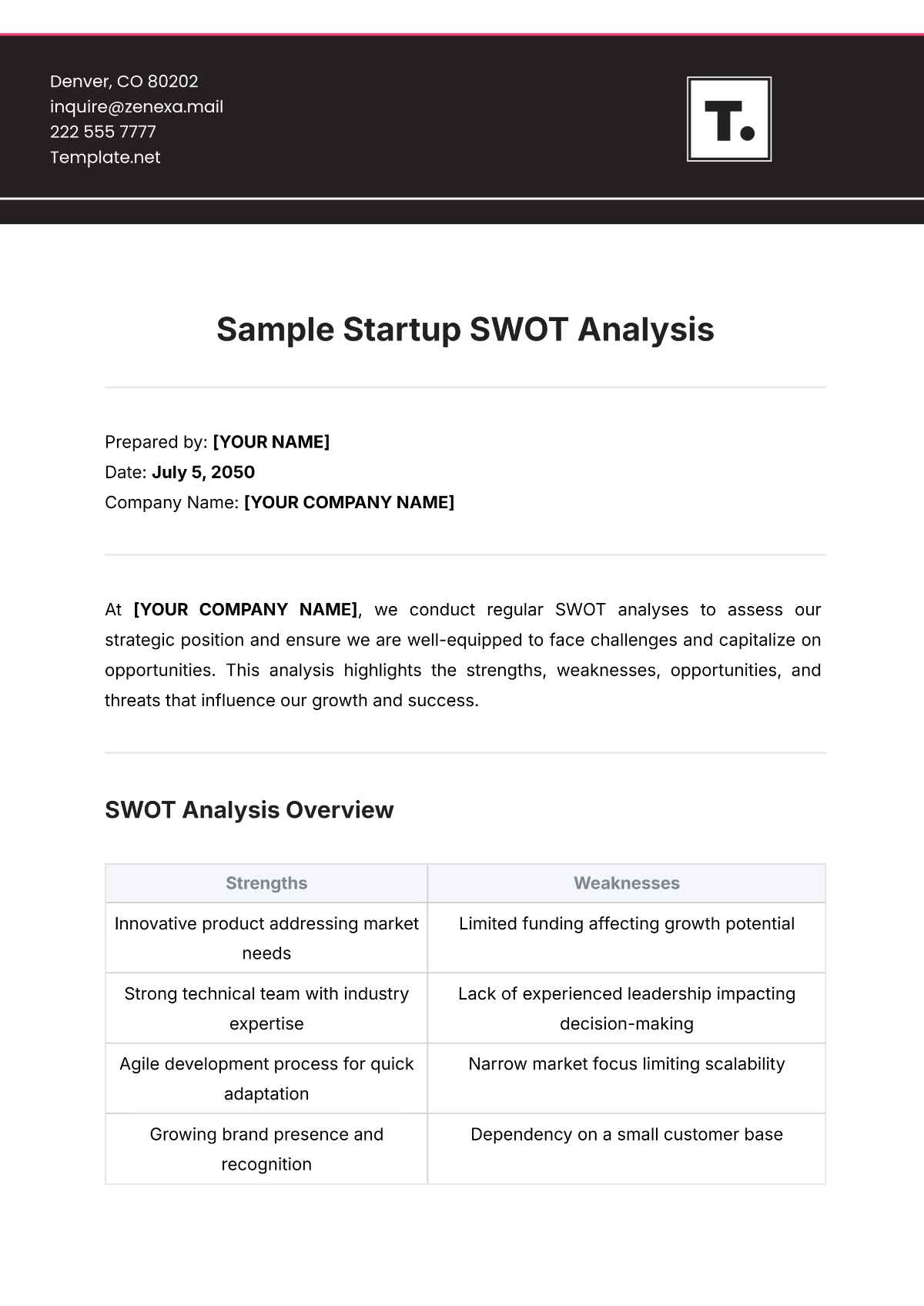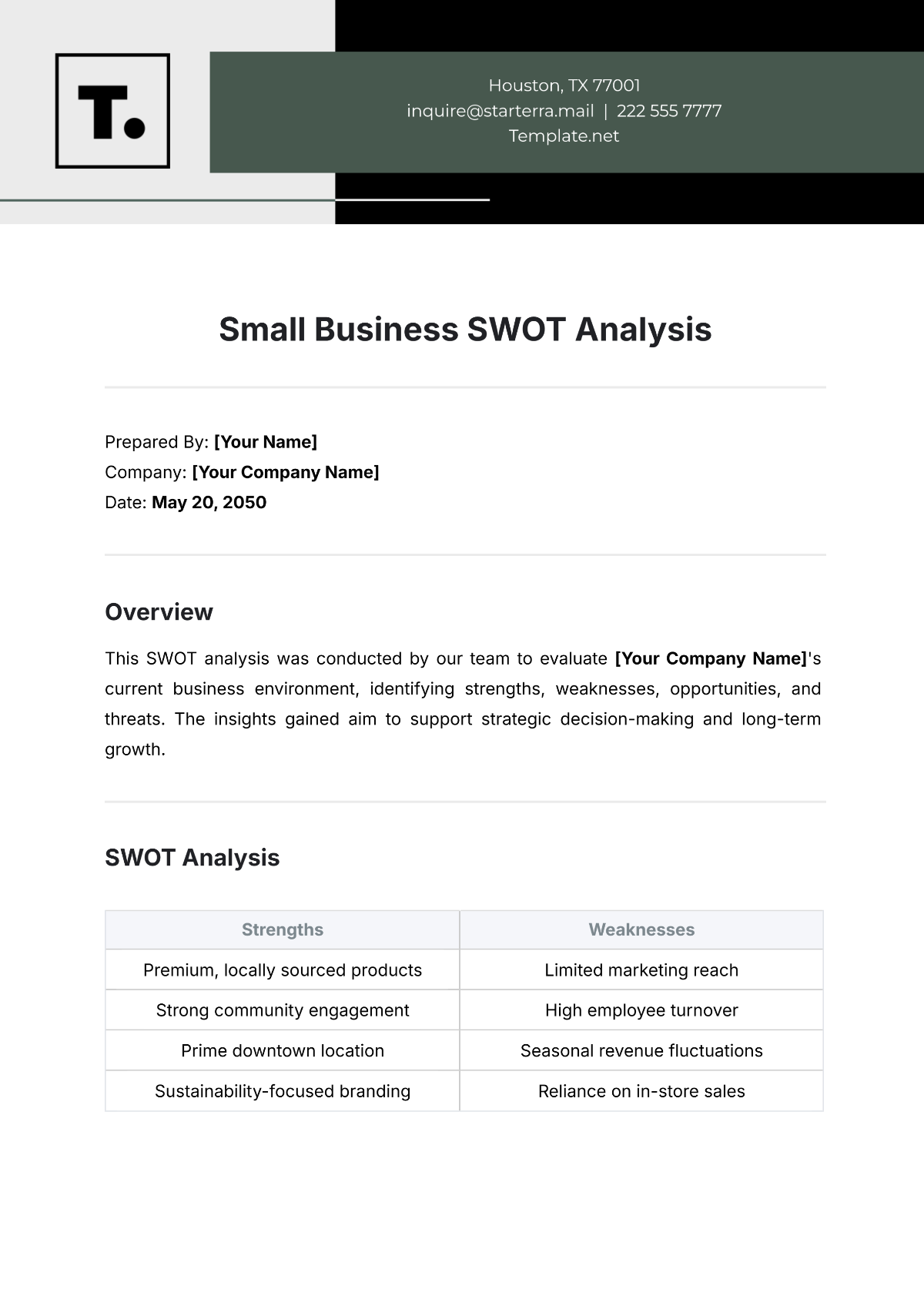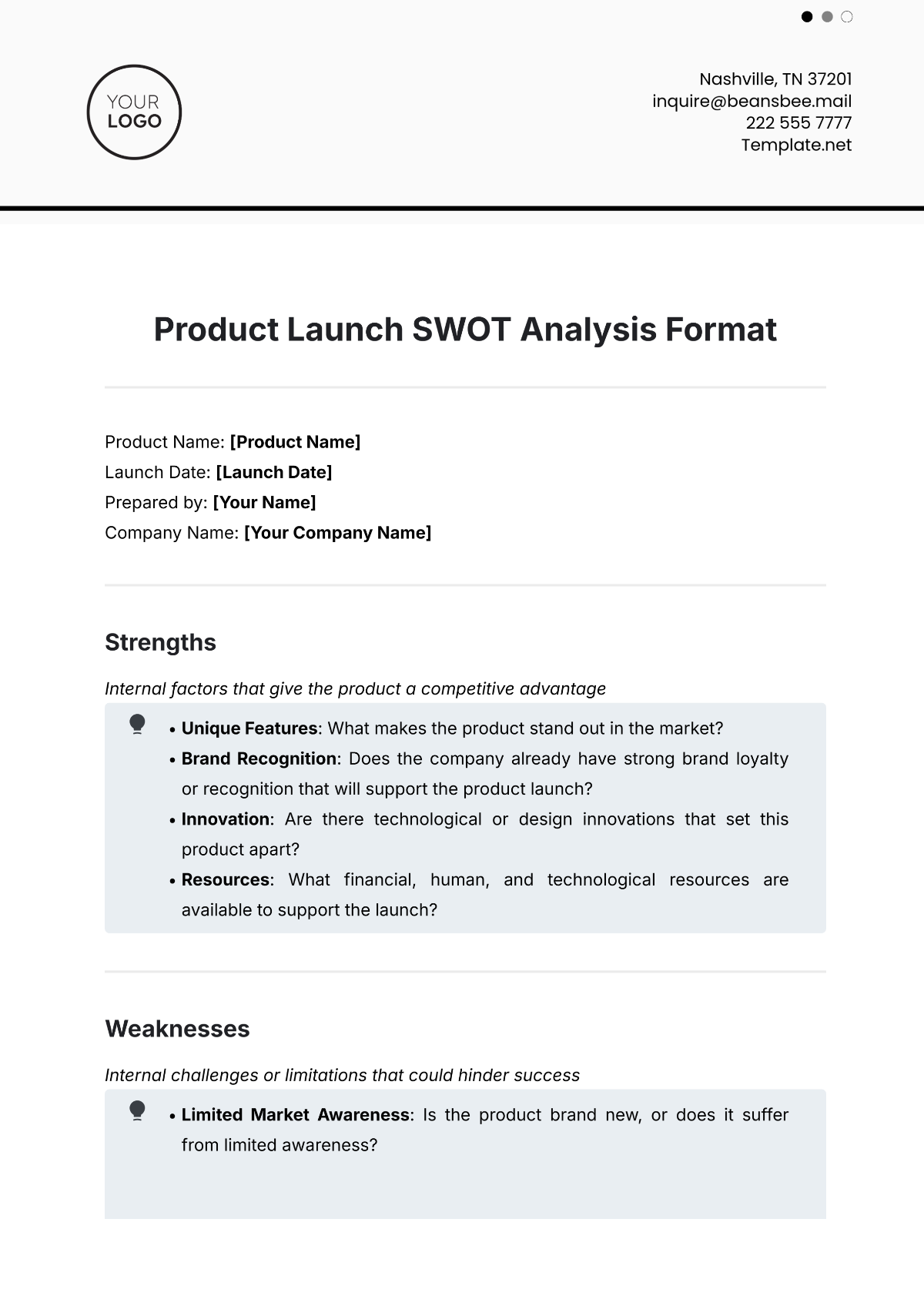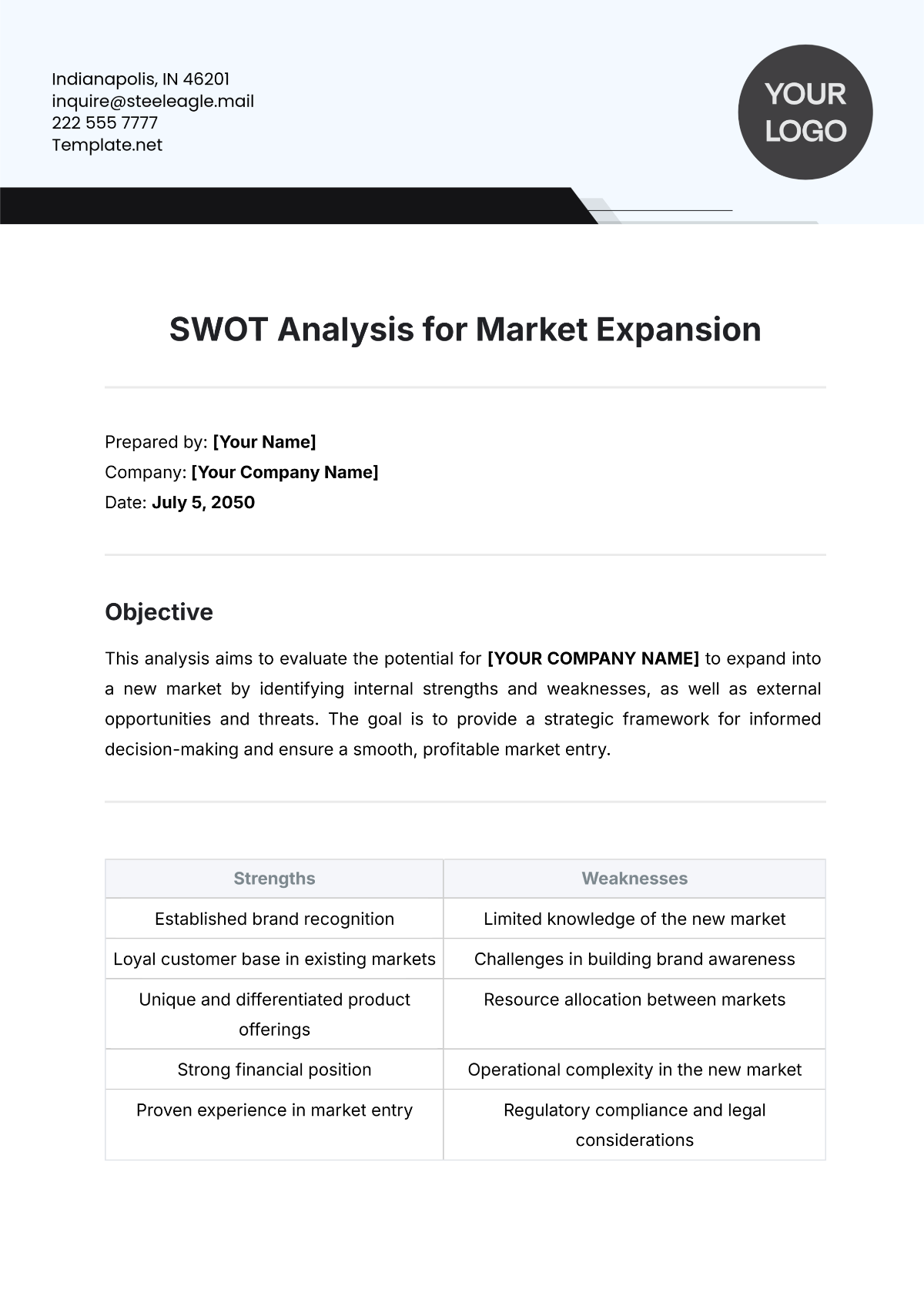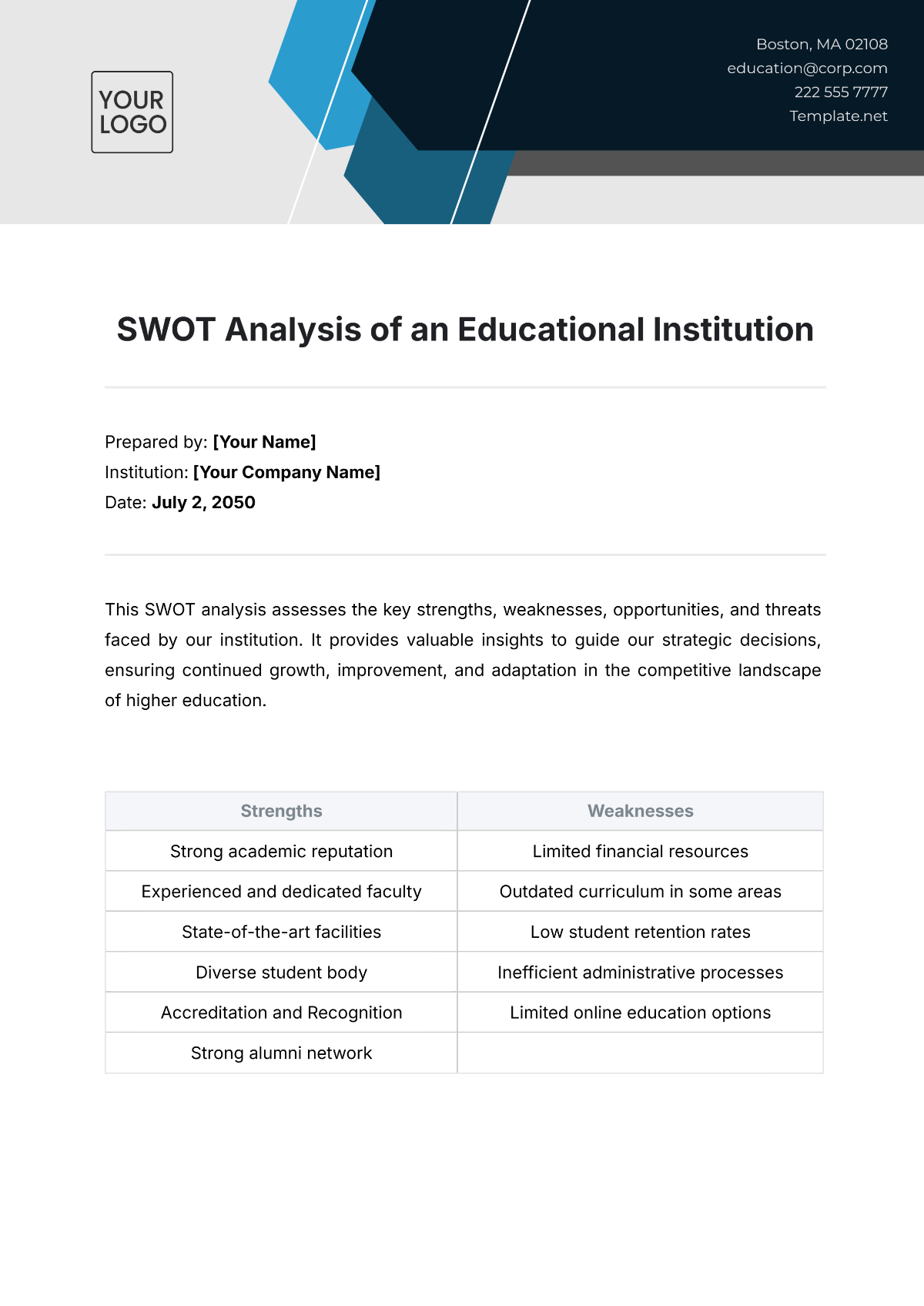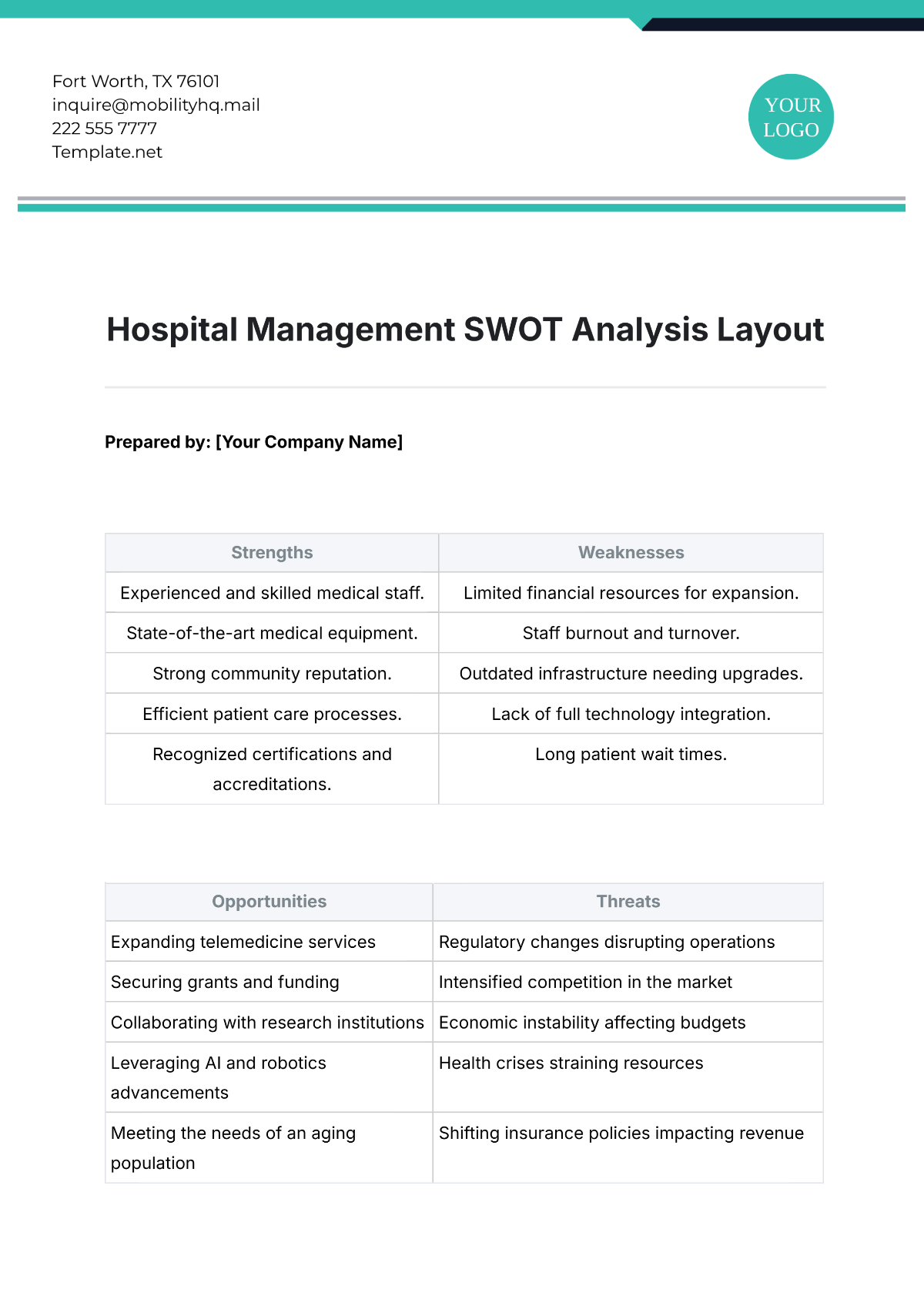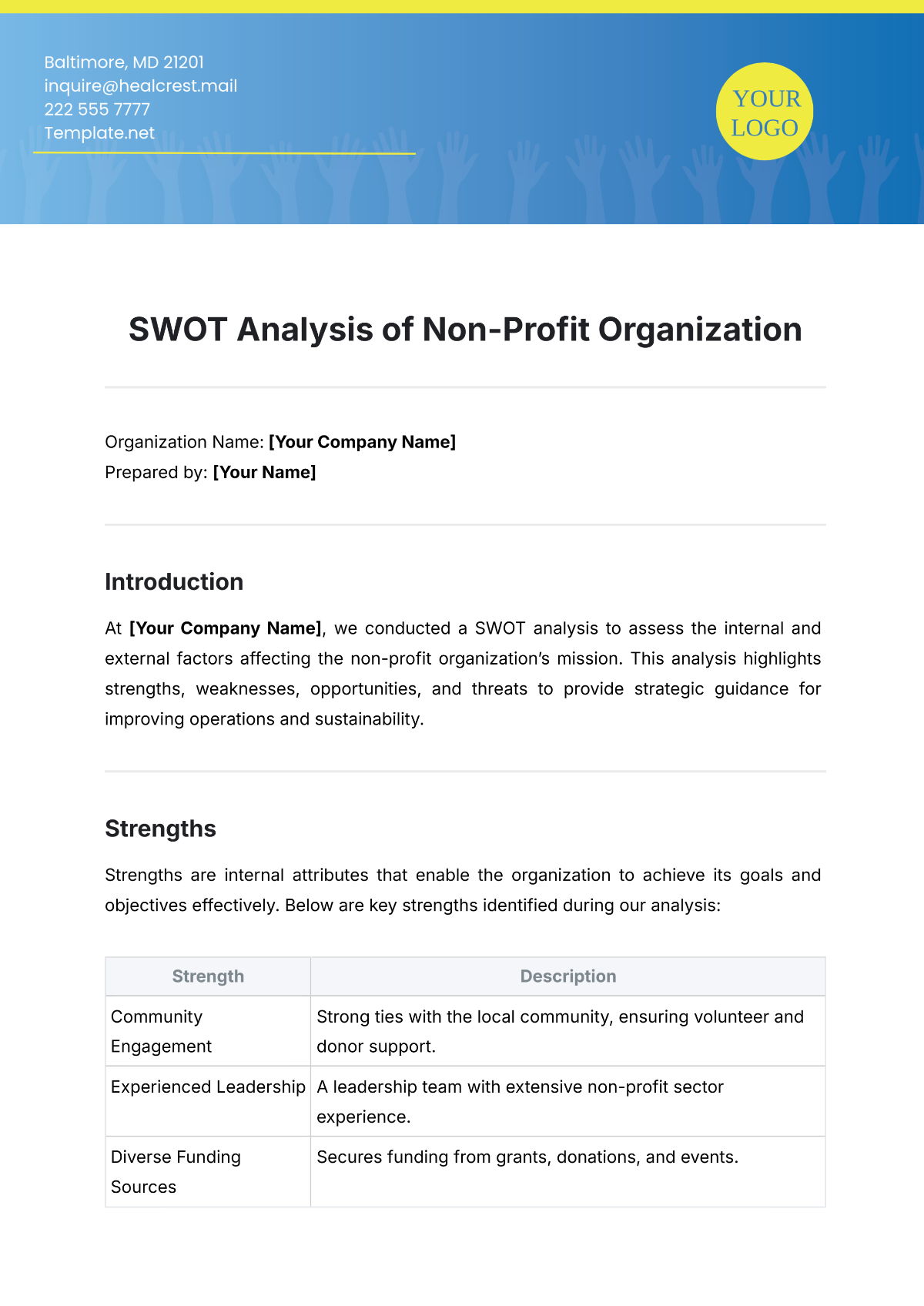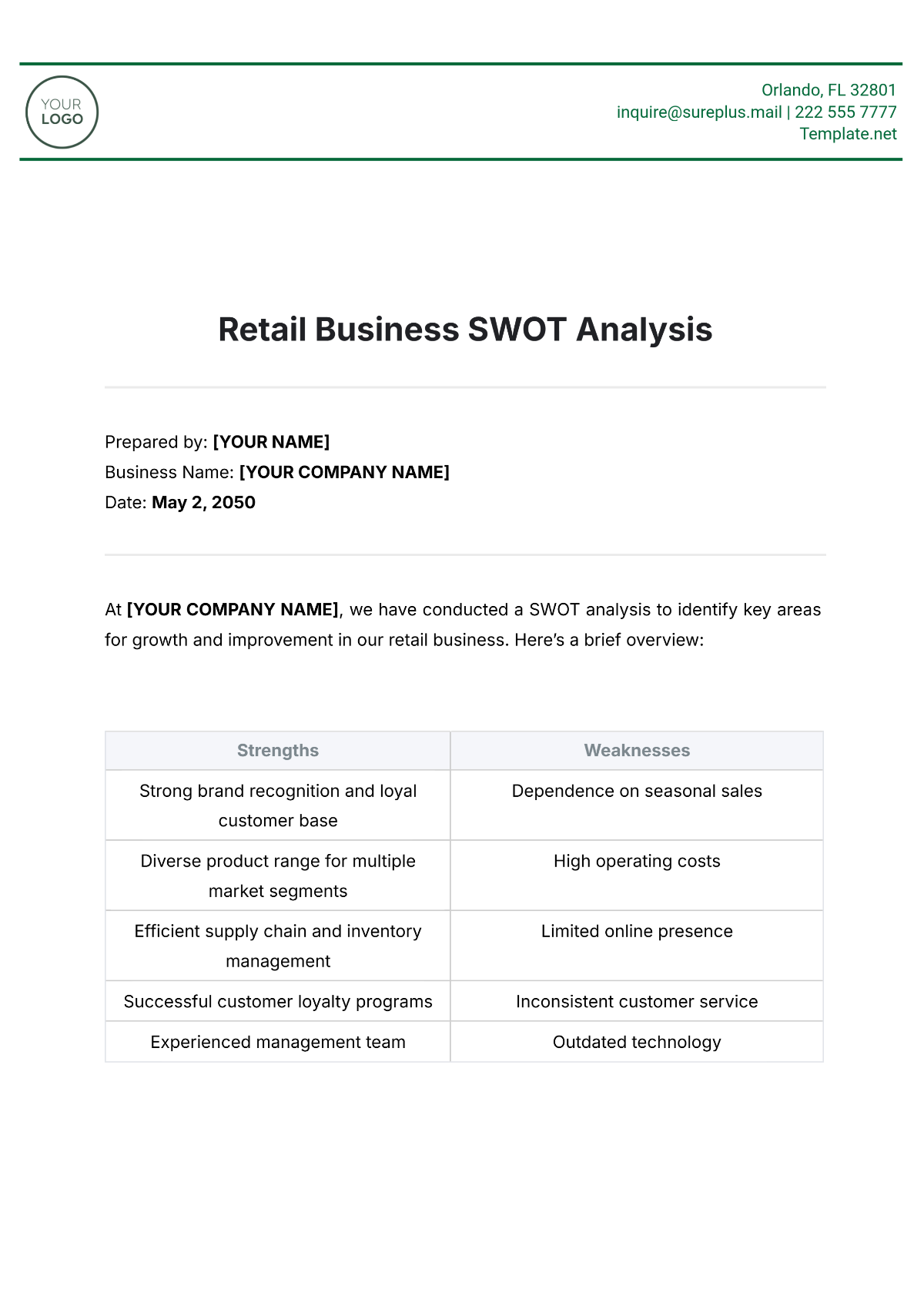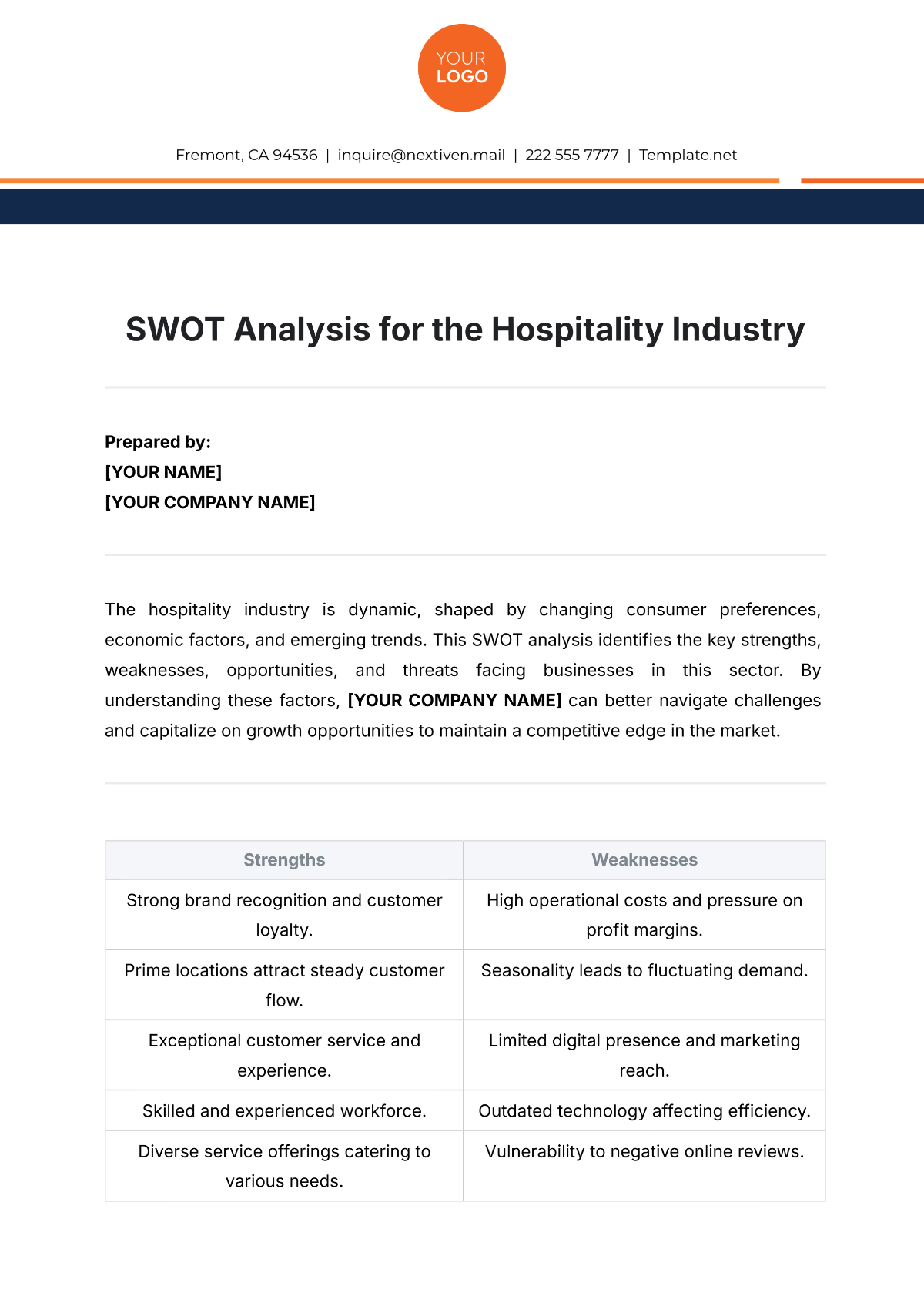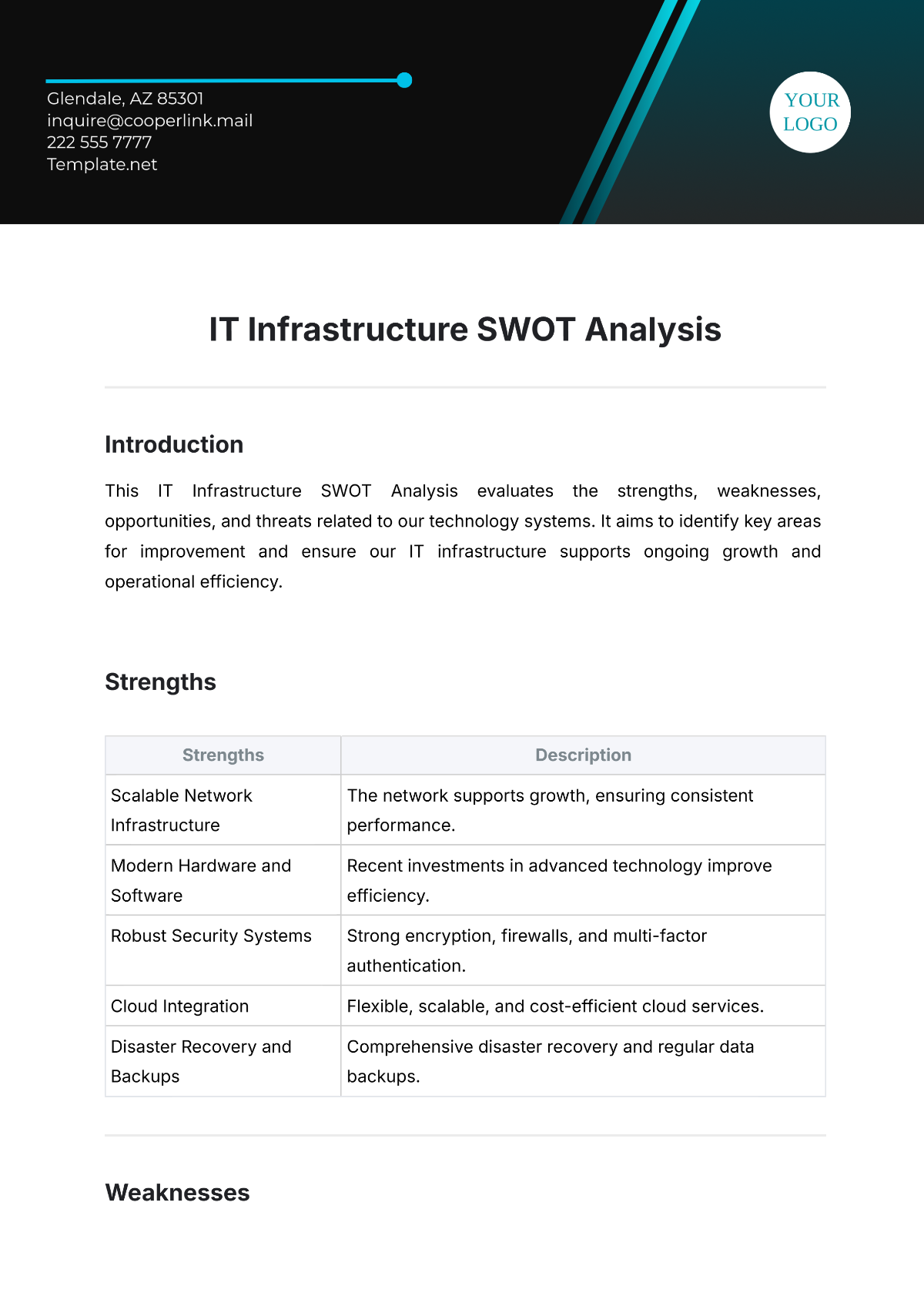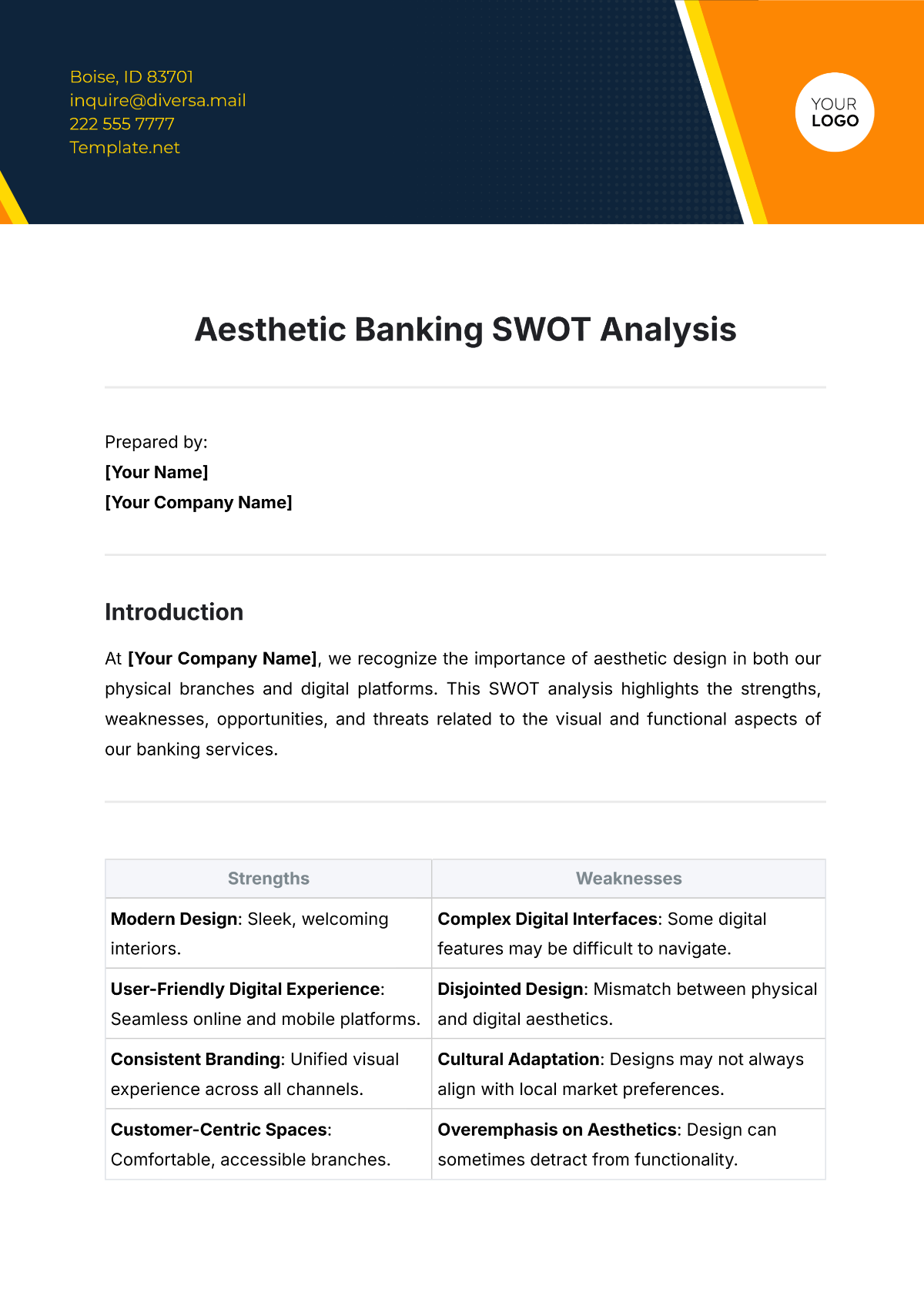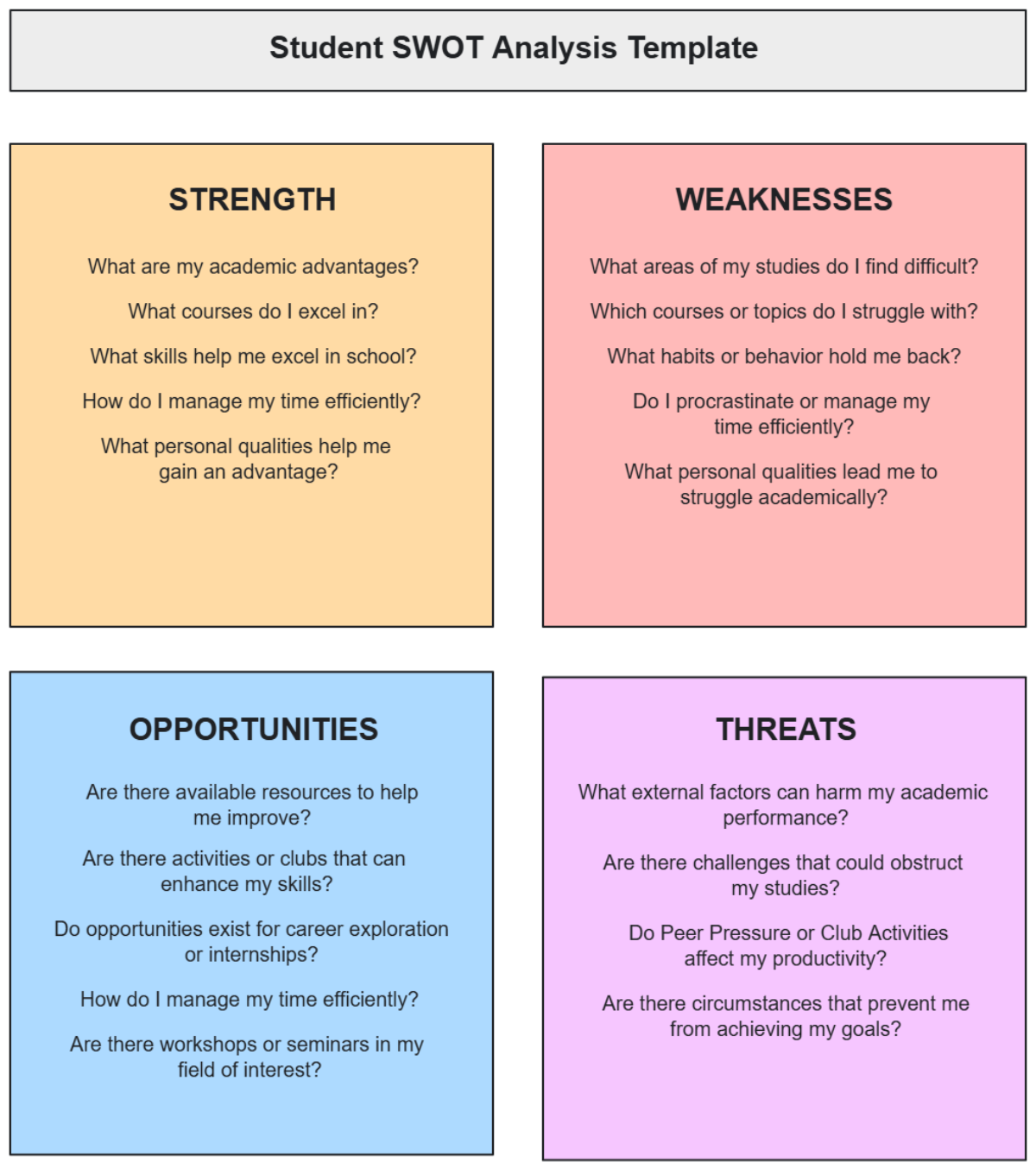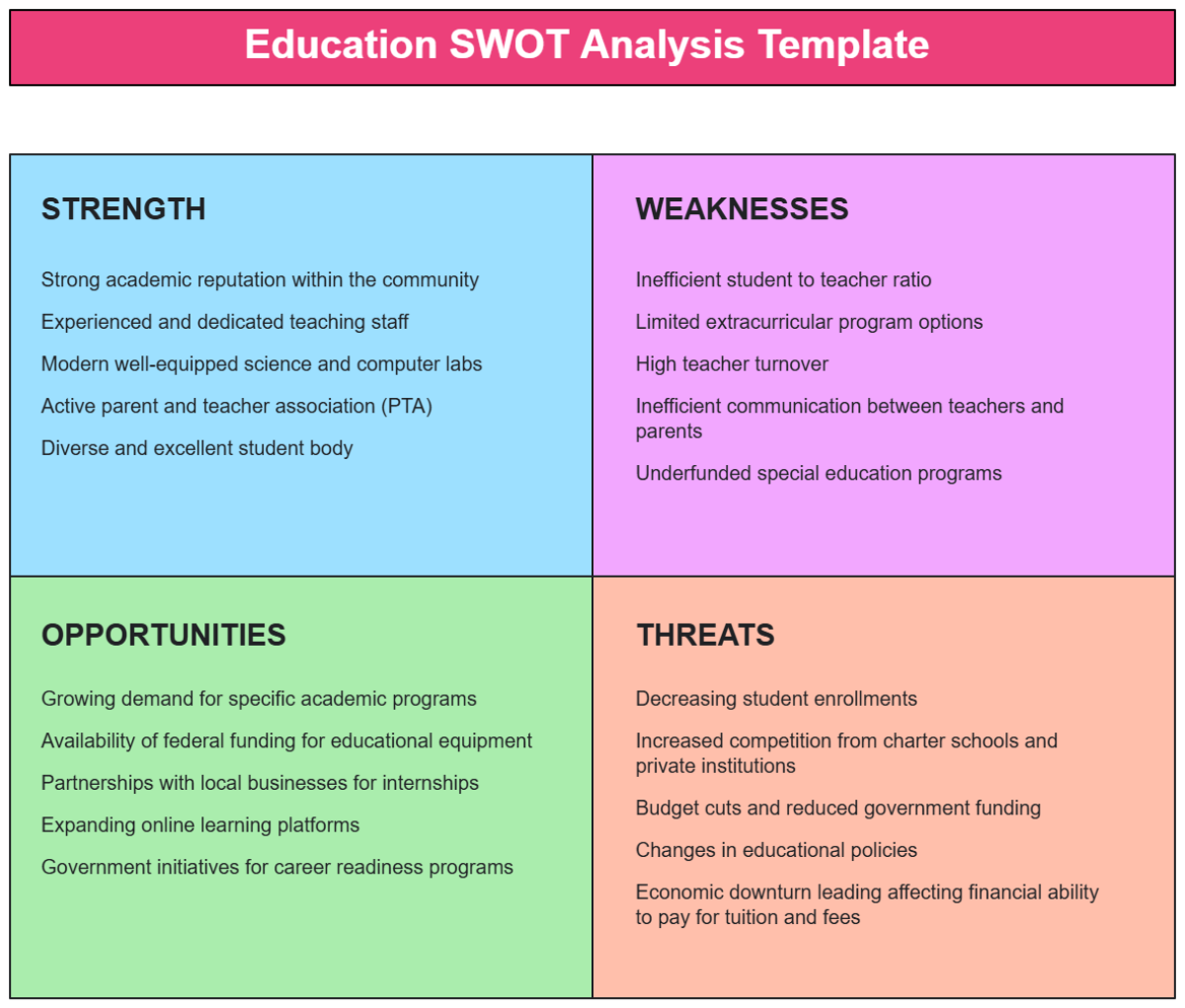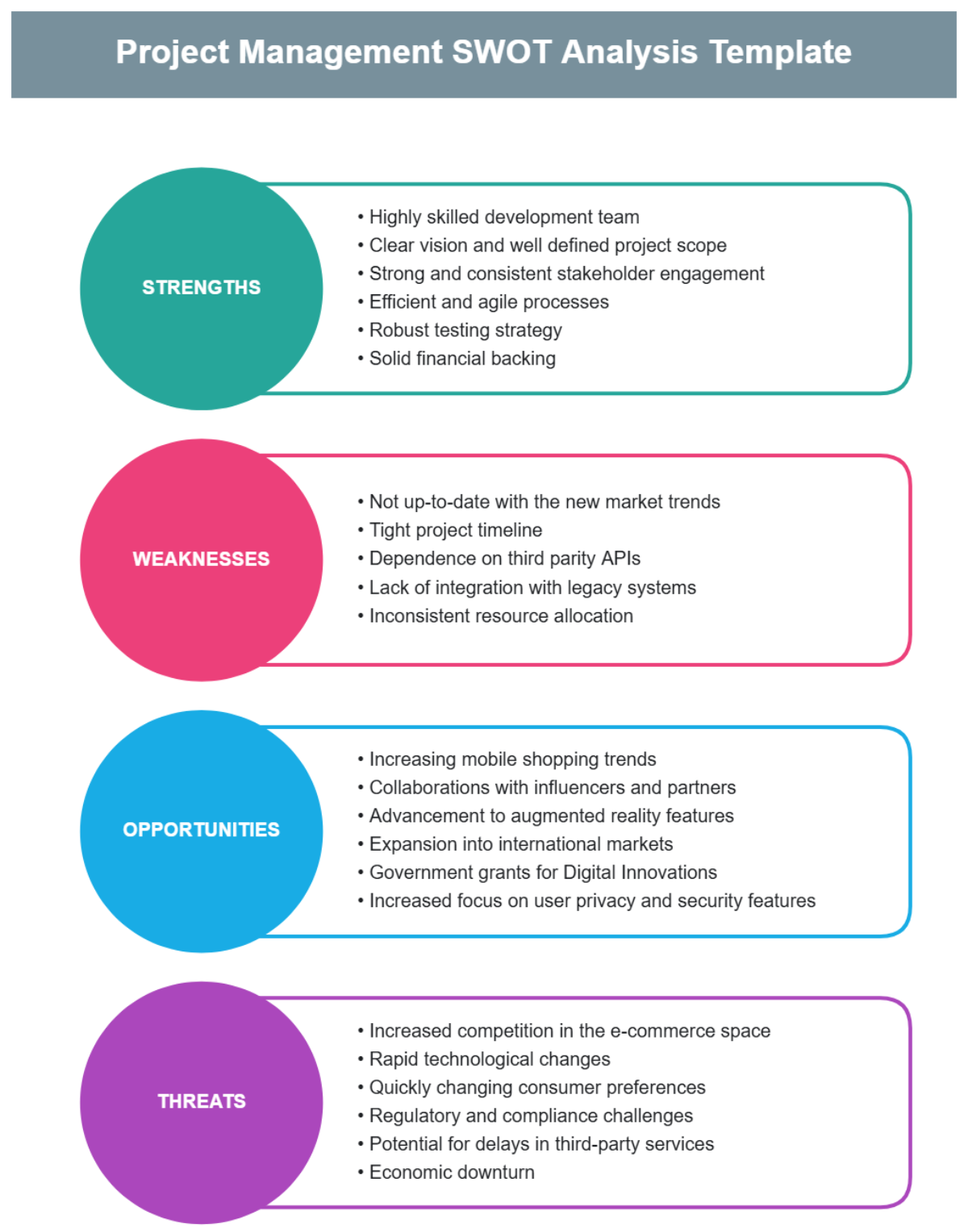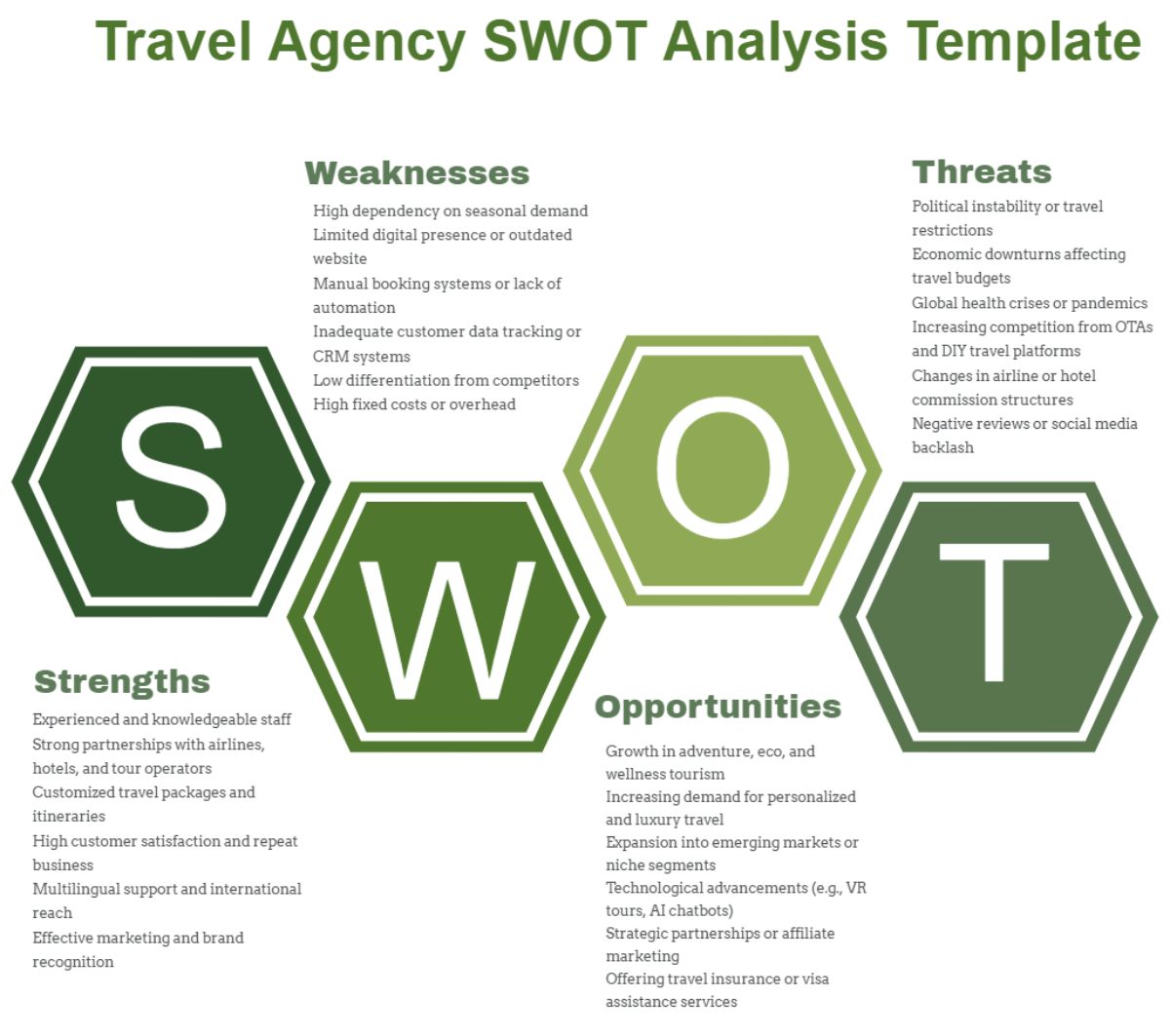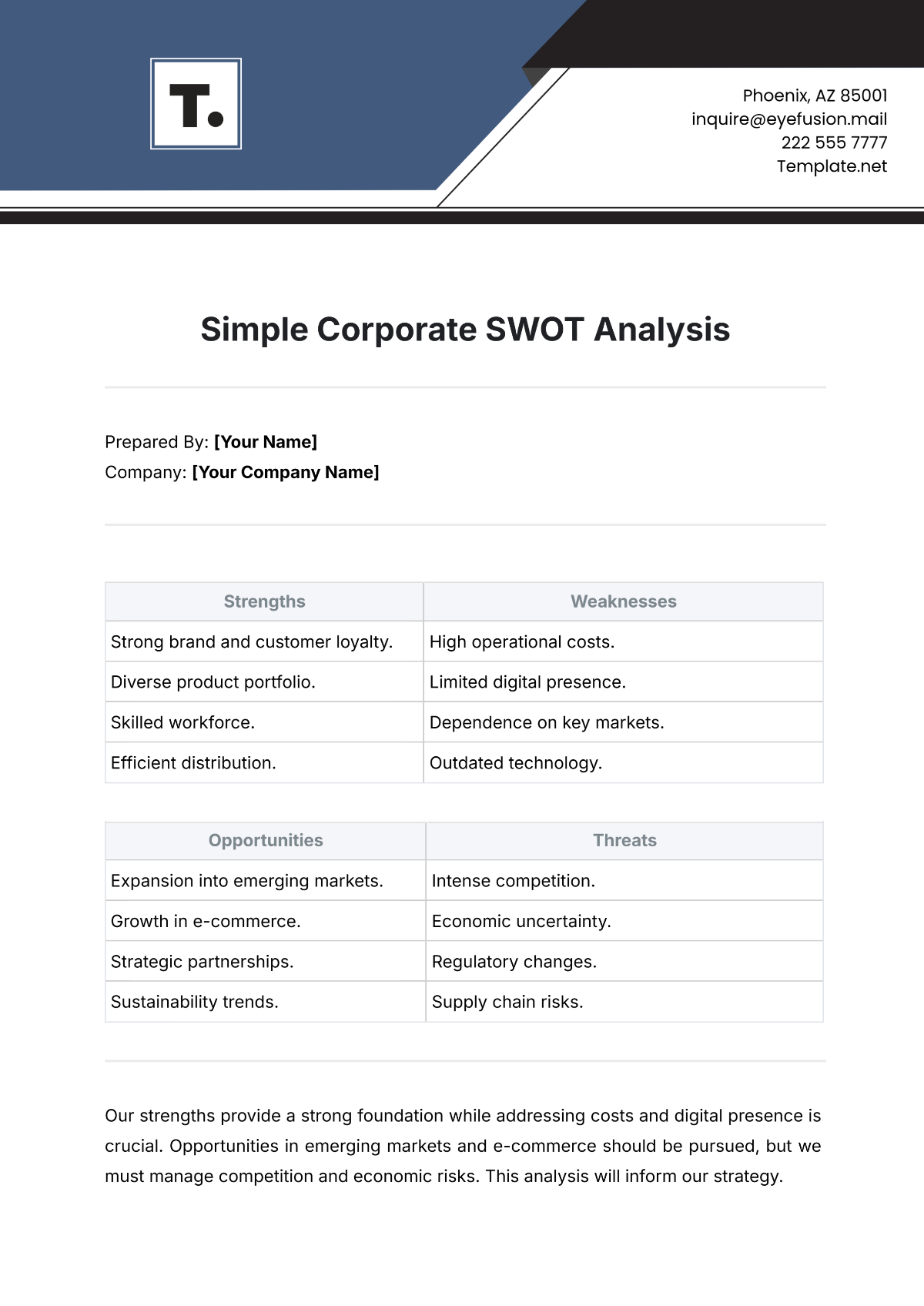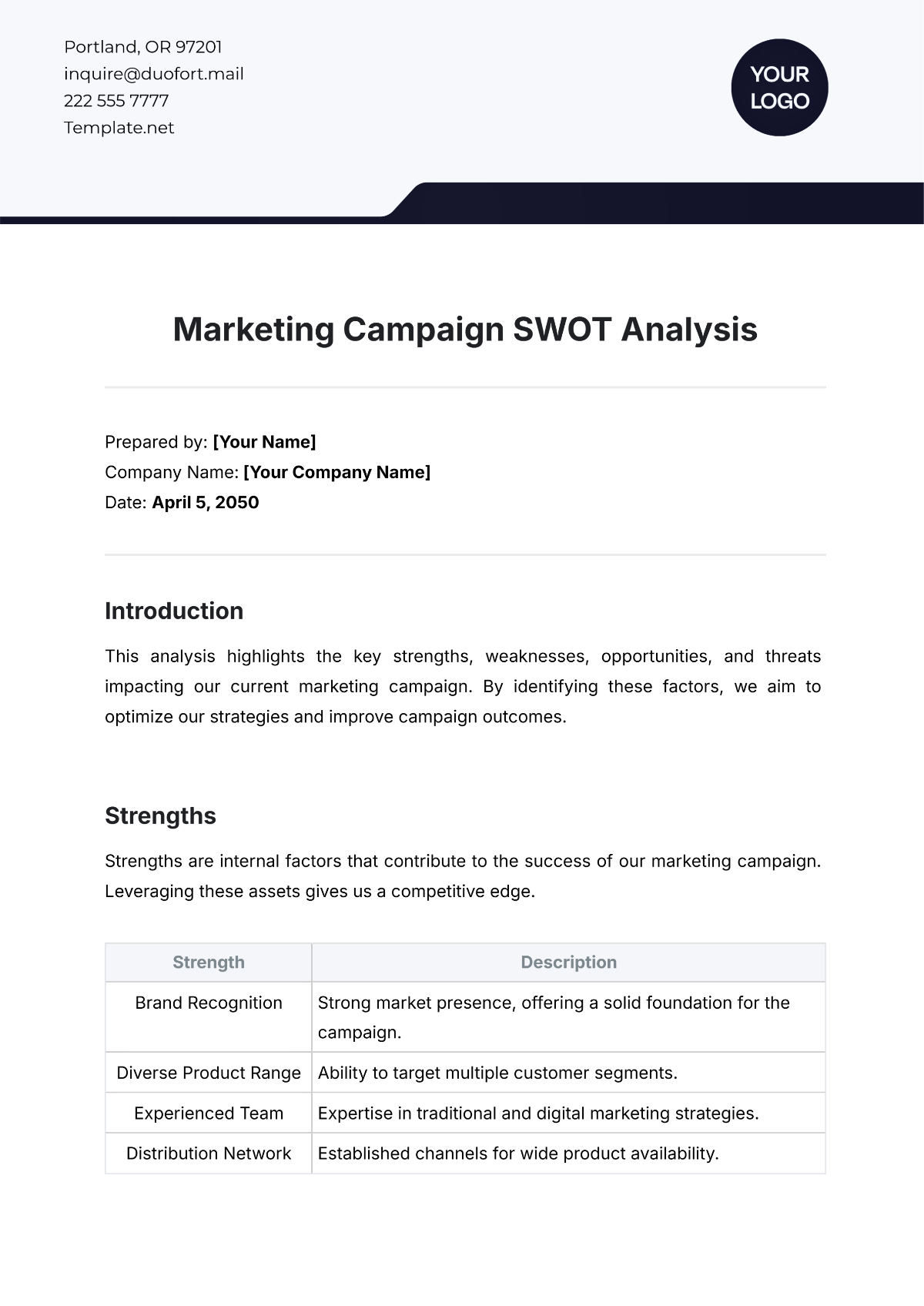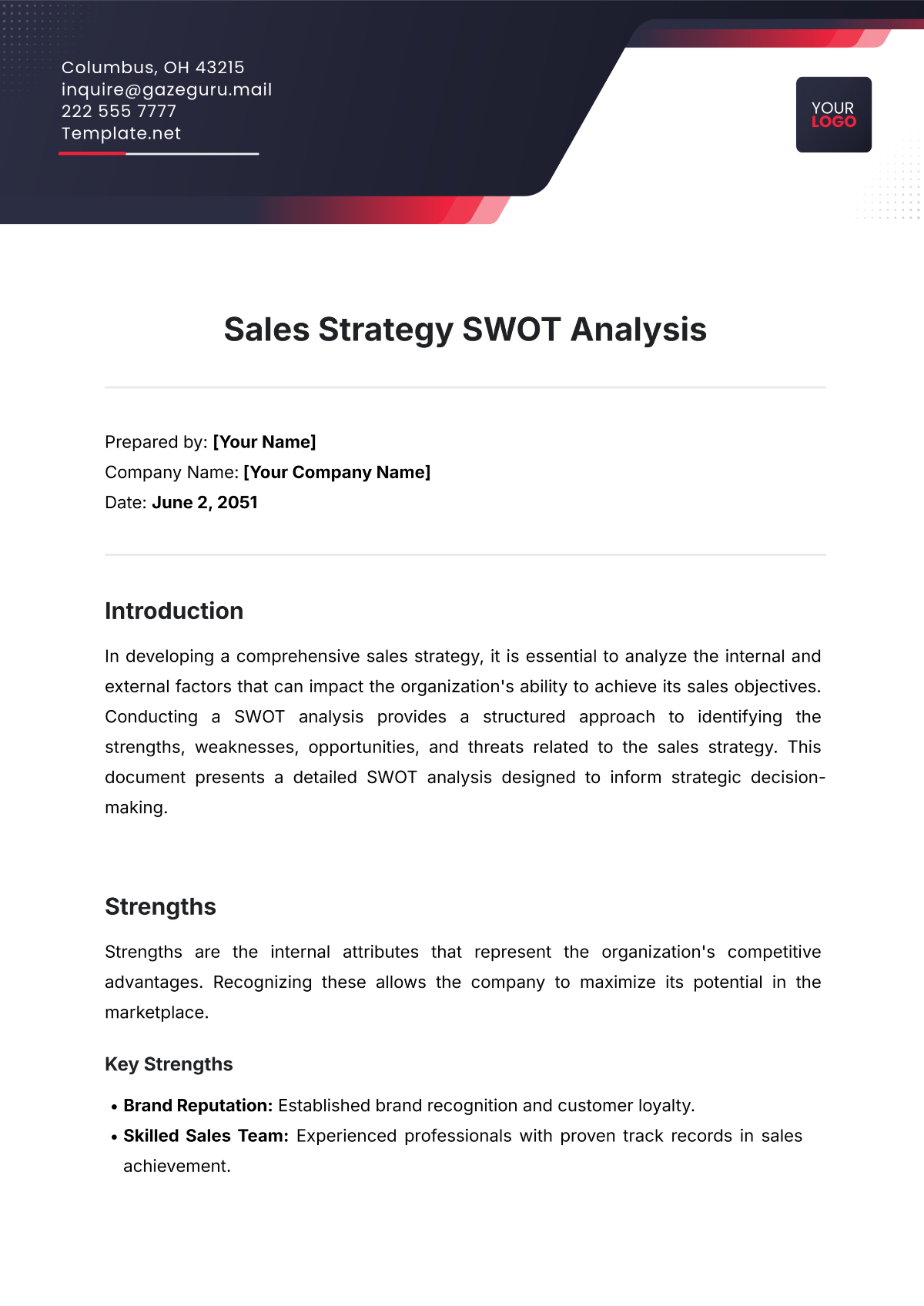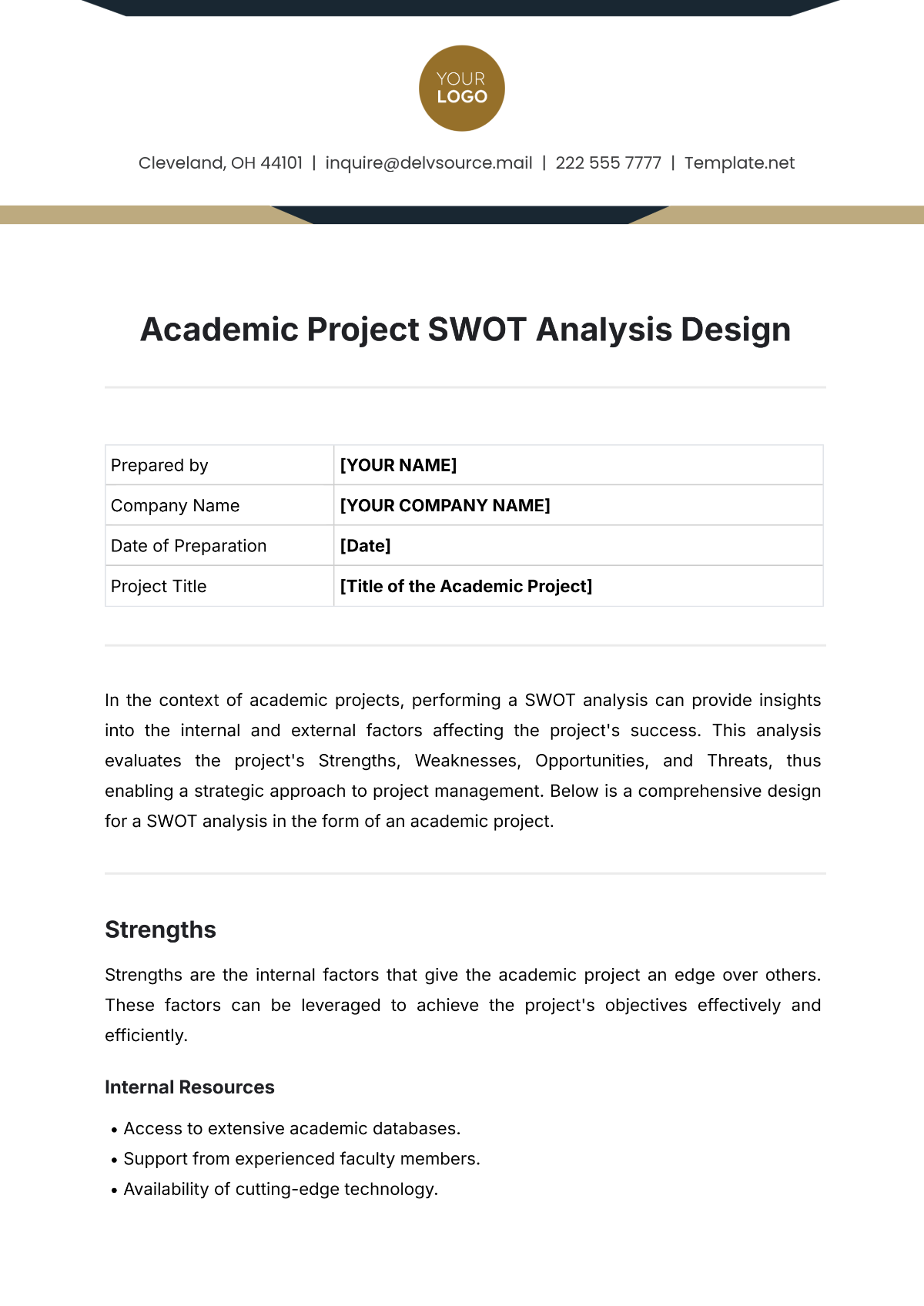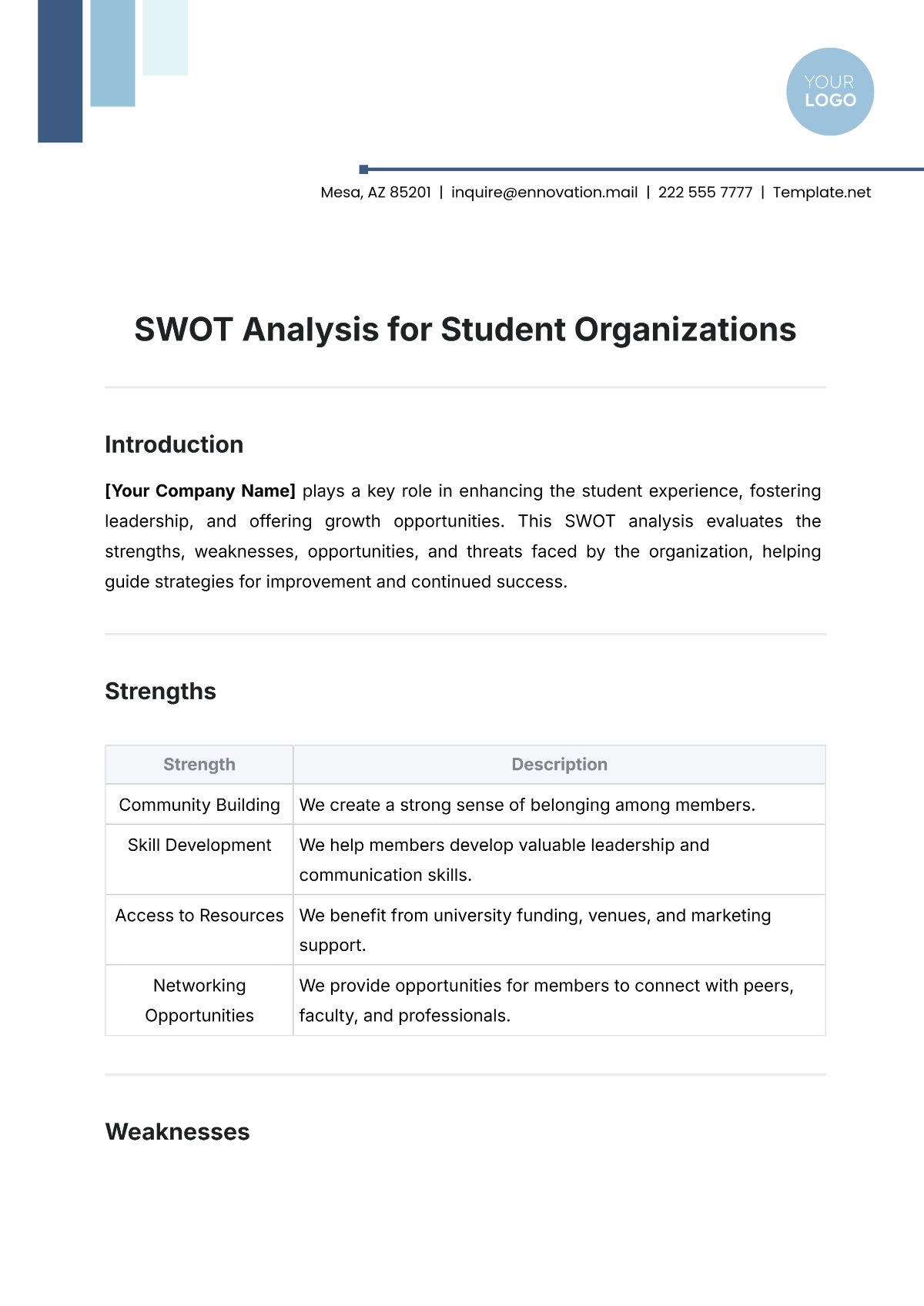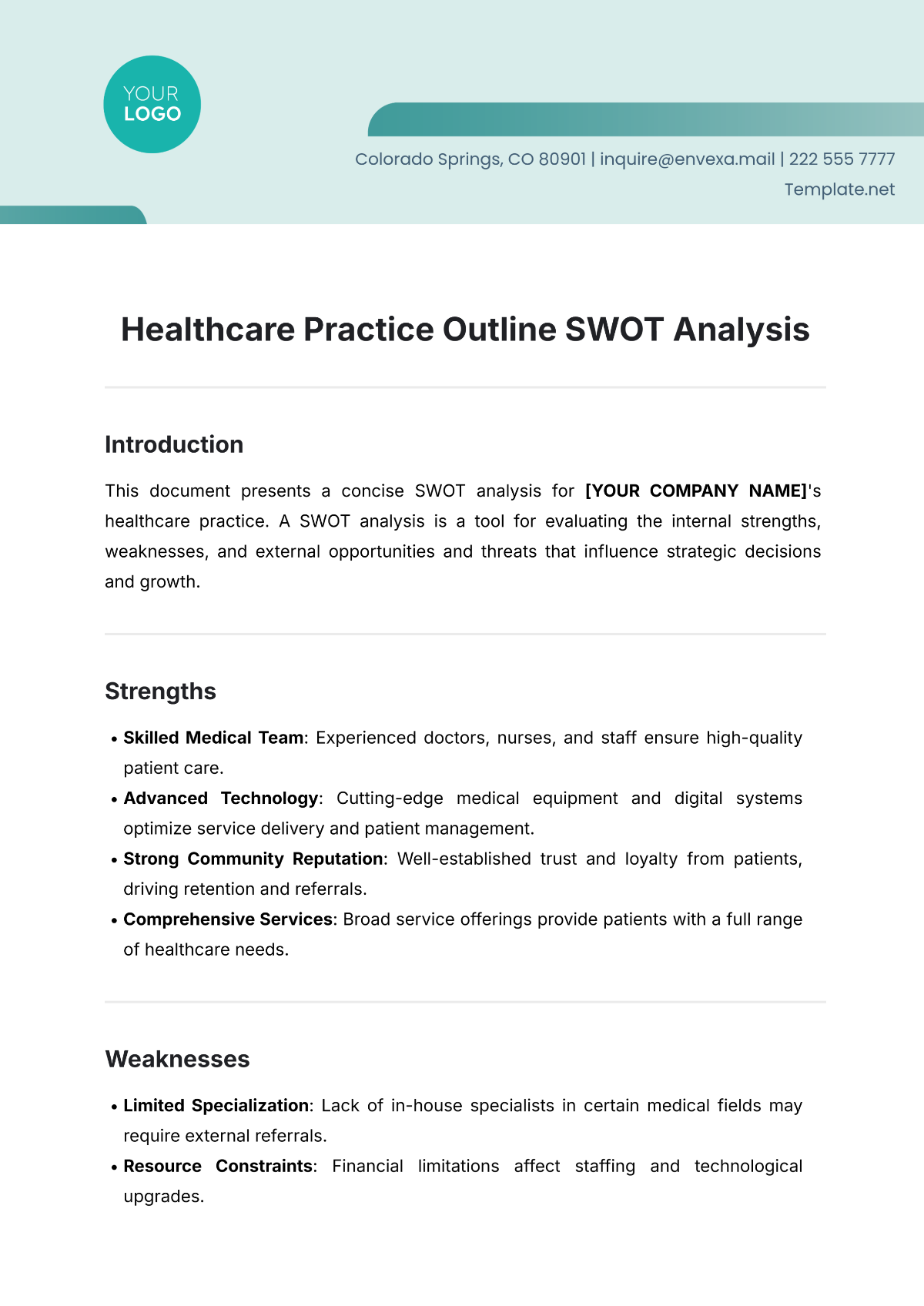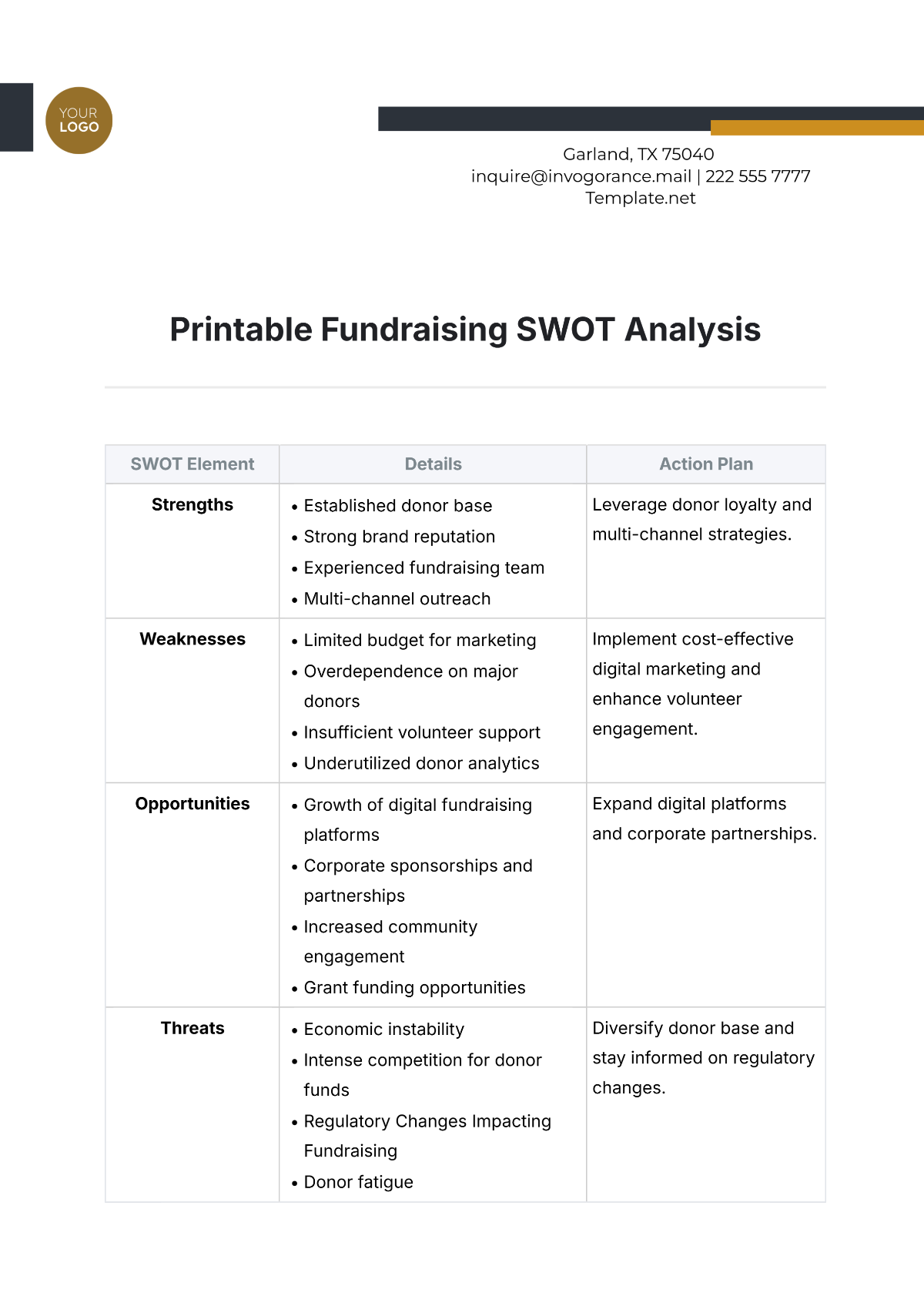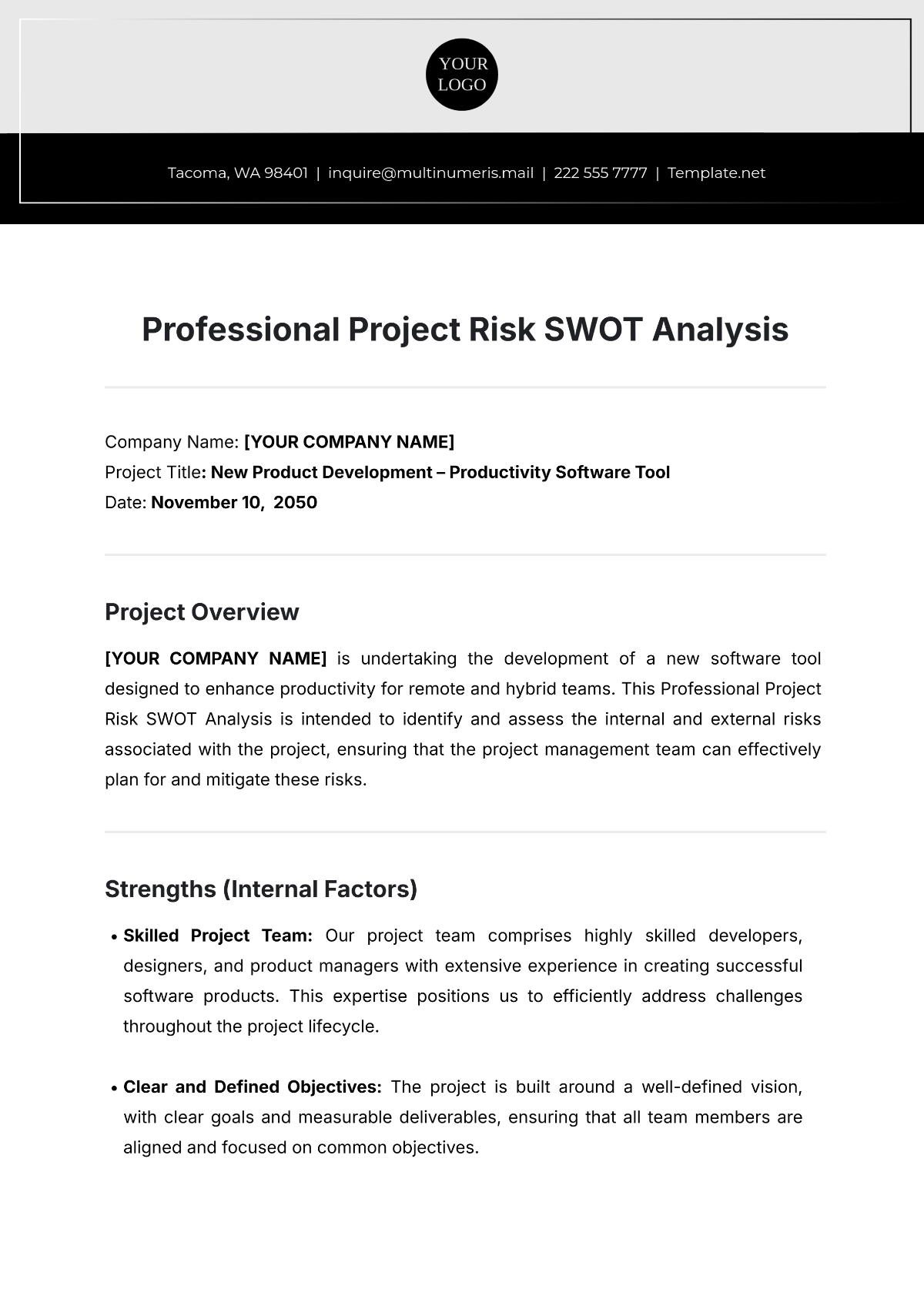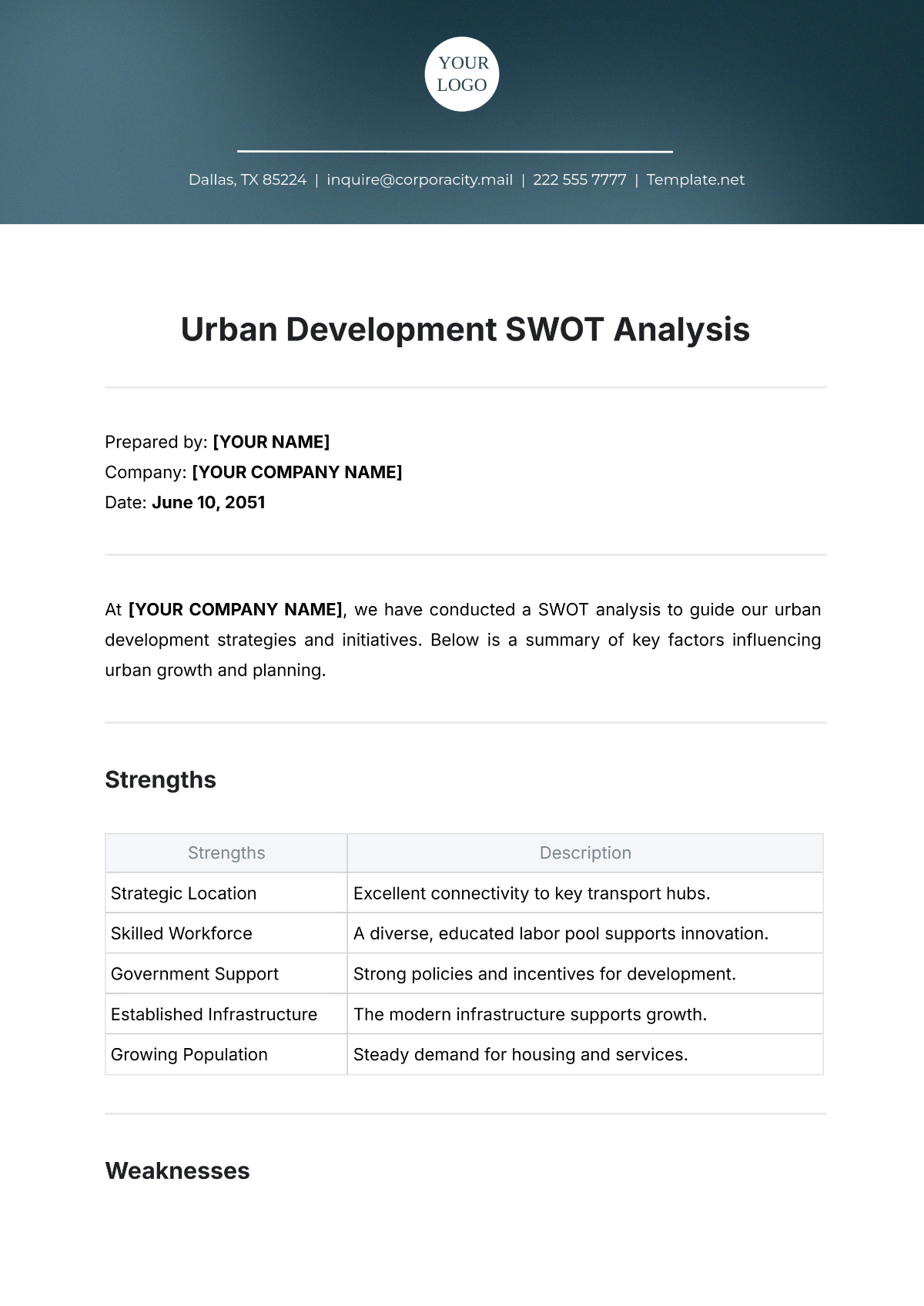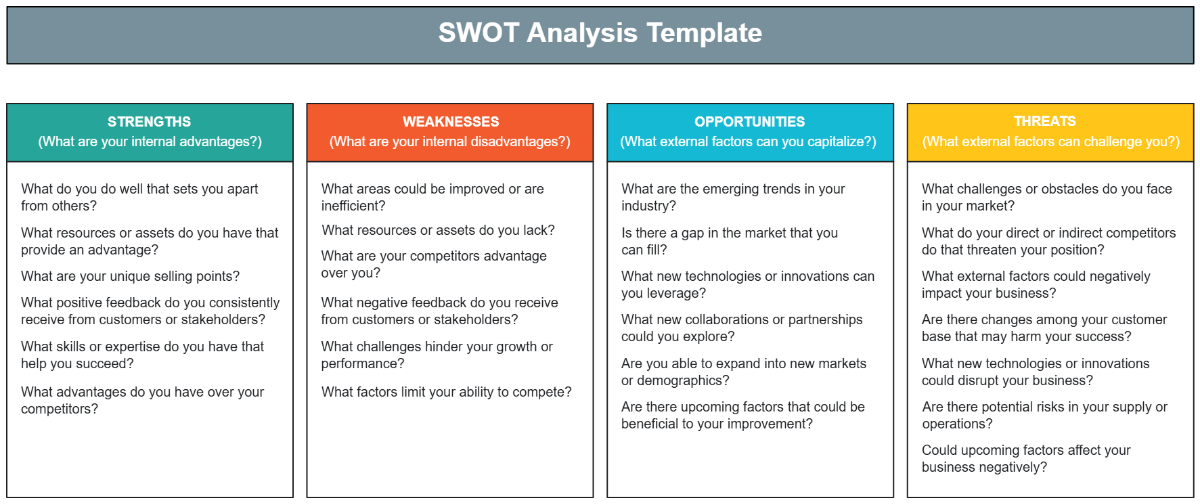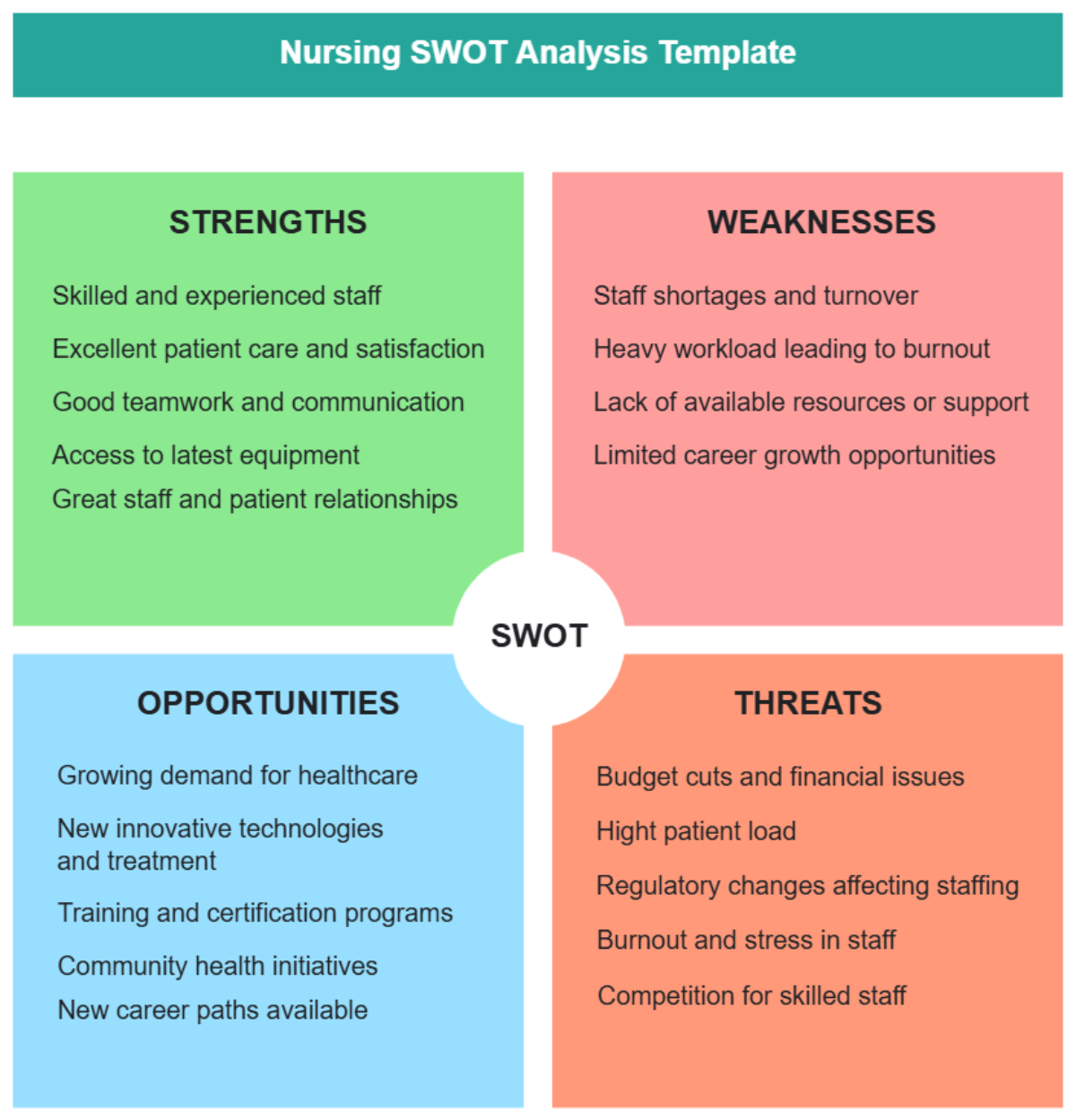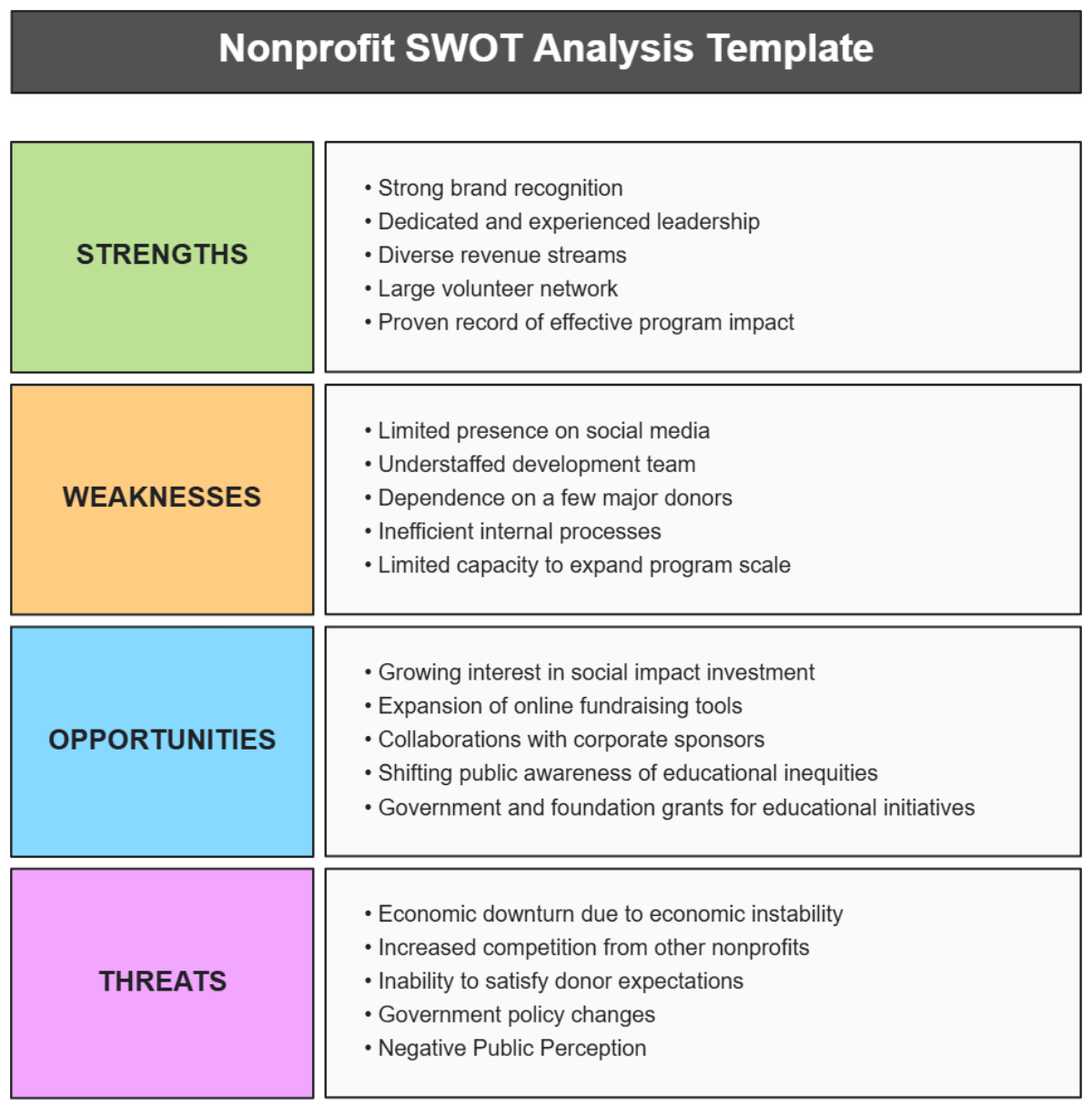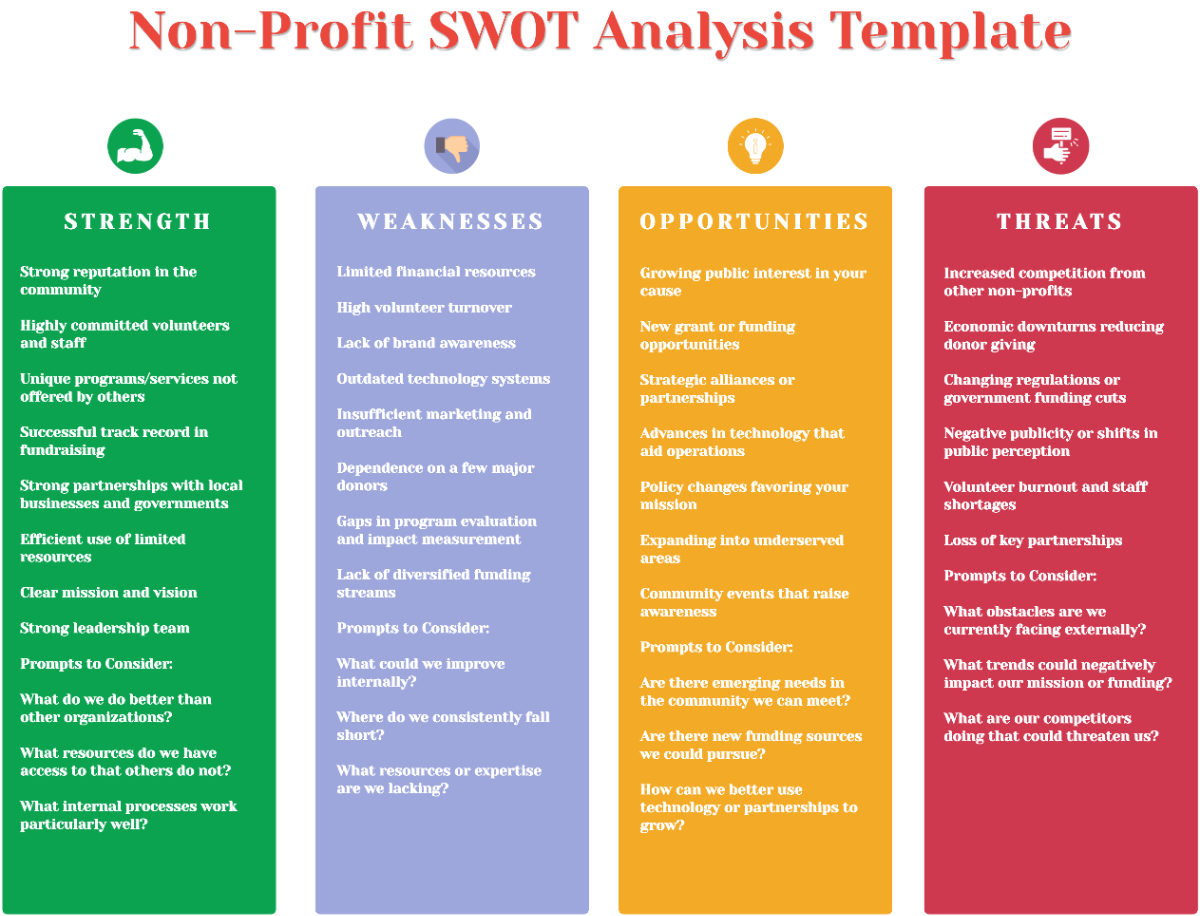Building Development SWOT Analysis
Prepared by | [Your Name] |
[Your Email] | |
Phone Number | [Your Company Number] |
Address | [Your Company Address] |
Website | [Your Company Website] |
I. Executive Summary
This section provides an overview of the SWOT analysis conducted for the proposed building development project. It outlines the strategic approach taken by [YOUR COMPANY NAME] to assess the viability and potential challenges of the development project.
II. SWOT Analysis
A. Strengths
Prime location with high foot traffic
Advanced architectural design
Strong financial backing
Experienced project team
B. Weaknesses
High initial investment cost
Regulatory complexities
Dependency on construction timelines
C. Opportunities
Growth in local real estate market
Potential partnerships with major brands
Development incentives from local government
D. Threats
Market fluctuations impacting real estate values
Increasing material costs
Competitive pressure from other developers
III. Analysis Tables
Aspect | Details |
|---|---|
Strengths | List strategic advantages, like location and technology. |
Weaknesses | Identify internal areas of improvement such as high costs. |
Opportunities | Describe external factors that could favor the project, like market growth. |
Threats | Discuss risks like competitive pressures or market downturns. |
IV. Strategic Recommendations
Based on the SWOT analysis, the following strategic steps are recommended for [YOUR COMPANY NAME] to enhance the success potential of the building development project:
Leverage financial strengths to negotiate better material prices.
Streamline approval processes to mitigate regulatory delays.
Engage actively with community stakeholders to boost project acceptance.
Monitor market trends closely to adjust strategies accordingly.
V. Implementation Timeline
This section provides a high-level overview of the project implementation timeline, outlining key milestones and deadlines to guide stakeholders throughout the project lifecycle.
Milestones and Deadlines:
Milestones:
Project Initiation: [Month Year]
Completion of Architectural Design: [Month Year]
Approval of Construction Plans: [Month Year]
Groundbreaking Ceremony: [Month Year]
Commencement of Construction: [Month Year]
Completion of Structural Construction: [Month Year]
Interior Finishing: [Month Year]
Final Inspection and Certification: [Month Year]
Project Handover: [Month Year]
Post-Handover Review: [Month Year]
Deadlines:
Permit Application Deadline: [Date]
Construction Commencement Deadline: [Date]
Project Completion Deadline: [Date]
Budget Review Meetings: [Frequency, e.g., Monthly]
Stakeholder Communication:
Regular updates on the project timeline and progress will be communicated to stakeholders through:
Monthly progress reports
Bi-weekly project status meetings
Quarterly stakeholder meetings
Risk Mitigation:
Contingency plans and mitigation strategies have been developed to address potential delays and ensure adherence to the project timeline. Regular monitoring and adjustment of the timeline will be conducted to mitigate risks and maintain project momentum.
VI. Conclusion:
This SWOT analysis demonstrates the potential and challenges of the building development project. By addressing the identified weaknesses and threats, and maximizing the strengths and opportunities, [YOUR COMPANY NAME] can effectively position the project for optimal development and profitability.
